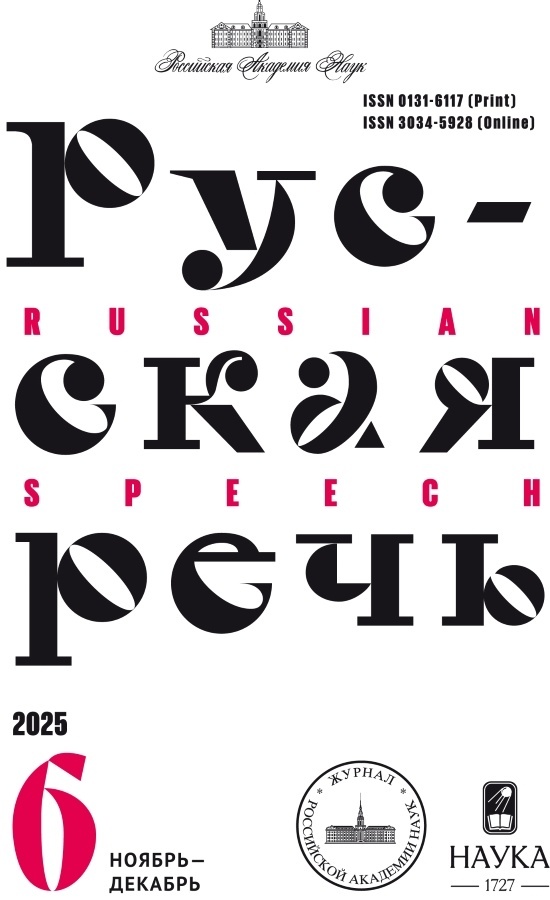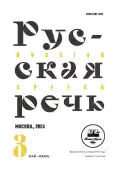Letters of Tsarina Evdokia Lopukhina in the Printed Manifesto of 1718
- Authors: Sadova T.S.1
-
Affiliations:
- Saint Petersburg State University
- Issue: No 3 (2024)
- Pages: 42-52
- Section: From the History of the Russian Language
- URL: https://gynecology.orscience.ru/0131-6117/article/view/652426
- DOI: https://doi.org/10.31857/S0131611724030042
- ID: 652426
Abstract
The article examines the language of the personal letters of tsarina Evdokia, the first wife of Peter the Great, which were included in the printed text of a legal document, the manifesto of 1718. It describes a step-by-step investigation into the case of an alleged conspiracy against the tsar, at the center of which was Evdokia, by that time (since 1698) nun Elena. The choice of material for the article was dictated by the author’s interest in the evolution of the business genres of the Russian office, a truly new stage of which occurred in the 18th century, a time of large-scale government reforms and, as a consequence, the restructuring of the entire system of business communication serving the work of the Russian Empire. Personal letters of the former tsarina, primarily addressed to her lover, childhood friend, officer of the Preobrazhensky regiment, Stepan Glebov, became a separate object for research for two reasons. Firstly, before the Manifesto of 1718 there were no public documents in which the internal unsightly aspects of the royal family life were publicly announced. Evdokia’s love letters became available to the general public: the Manifesto was printed in two thousand copies and sold freely. Secondly, for the first time, a legal document that had all the signs of the clerical style of the early 18th century included love letters, creating a bright stylistic contrast with the general style of the business text. It is also known that Peter actively intervened in the draft text of the Manifesto, corrected the wording, and inserted entire fragments written in his own hand. Consequently, the printed text of the document, which was subject to mandatory publication, was important to the emperor in this form. The manifesto performs a number of important pragmatic functions in the conditions of the new Peter the Great era: in addition to the obvious informational, it has edifying, influencing and imperative functions.
Full Text
About the authors
Tatiana S. Sadova
Saint Petersburg State University
Author for correspondence.
Email: tatsad_90@mail.ru
Russian Federation, Saint Petersburg
References
- Agarkova R. K. [Controversial issues in the biography of Karion Istomin]. Uchonyye zapiski Dushanbinskogo gosudarstvennogo pedagogicheskogo instituta im. T. G. Shevchenko [Scientific notes of the Dushanbe State Pedagogical Institute named after. T. G. Shevchenko], 1967, vol. 51, no. 19, pp. 100–116. (In Russ.)
- Efimov S. V. [Evdokia Lopukhina — the last Russian tsarina of the 17th century]. Srednevekovaya Rus’ [Medieval Rus’]. St. Petersburg, St. Petersburg State Univ. Publ., 1995, pp. 136–165. (In Russ.)
- Kozlyakov V. N. Tsaritsa Yevdokiya, ili plach po Moskovskomu tsarstvu [Tsarina Evdokia, or lament for the Muscovite kingdom]. Moscow, Molodaya Gvardiya Publ., 2014. 318 p.
- Mayorov A. P. [Causal conjunctions in the business language of the 17th — 18th centuries]. Acta Linguistica Petropolitana: Trudy Instituta lingvisticheskikh issledovaniy RAN [Acta Linguistica Petropolitana: Proceedings of the Institute of Linguistic Research of the Russian Academy of Sciences], 2009, vol. V, part 3, pp. 113–126. (In Russ.)
- Nikitin O. V. Delovaya pis’mennost’ v istorii russkogo yazyka (XI–XVIII vv.): Lingvisticheskiye ocherki [Official writing in the history of the Russian language (11th — 18th centuries): Linguistic essays]. Moscow, Nauka Publ., Flinta Publ., 2021. 266 p.
- Rudnev D. V., Sadova T. S. [Metaphor of the state and ways of expressing it in Russian business speech]. Vestnik Volgogradskogo gosudarstvennogo universiteta, 2023, vol. 22, no. 4, pp. 21–36. (In Russ.)
- Shvedova M. M. [The last years of the life of tsarina Evdokia Lopukhina in the Novodevichy monastery (1727–1731)]. Kul’turno-istoricheskoye naslediye lichnosti i roda: Tsaritsa Yevdokiya Lopukhina [Cultural and historical heritage of the individual and family: Tsarina Evdokia Lopukhina]. Moscow, Heritage Institute Publ., 2022, pp. 172–193. (In Russ.)
- Sorokin Yu. S. (ch. ed.). Slovar’ russkogo yazyka XVIII veka [Dictionary of the Russian language of the 18th century]. Vol. 12. St. Petersburg, Nauka Publ., 2001. 254 p.
- Tokmakov I. F. Istoricheskoye i arkheologicheskoye opisaniye Pokrovskogo devich’yego monastyrya v Suzdale [Historical and archaeological description of the Pokrovsky nunnery in Suzdal]. Moscow, Kniga po Trebovaniyu Publ., 2015. 146 p.
- Voskresenskiy N. A. Petr Velikiy kak zakonodatel’ [Peter the Great as a legislator]. Moscow, Novoe Literaturnoe Obozrenie Publ., 2017. 640 p.
- Zamkova V. V. [Slavicism in the business language of the middle of the 18th century]. Ocherki po istorii russkogo yazyka i literatury XVIII v. [Essays on the history of the Russian language and literature of the 18th century]. Kazan, Kazan State Univ. Publ., 1969, pp. 121–129. (In Russ.)








